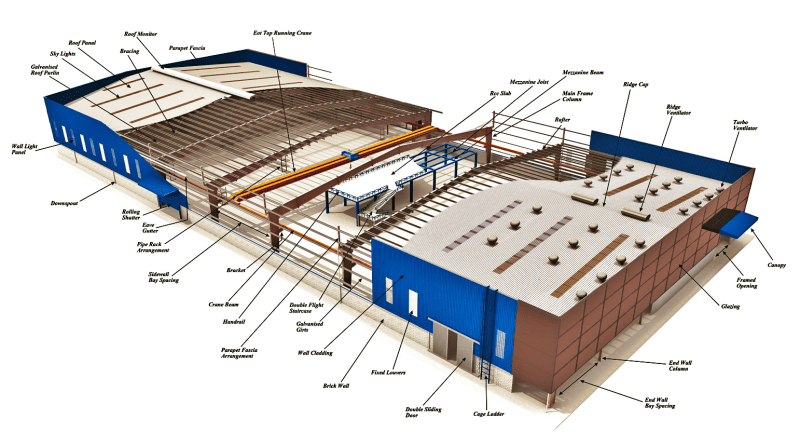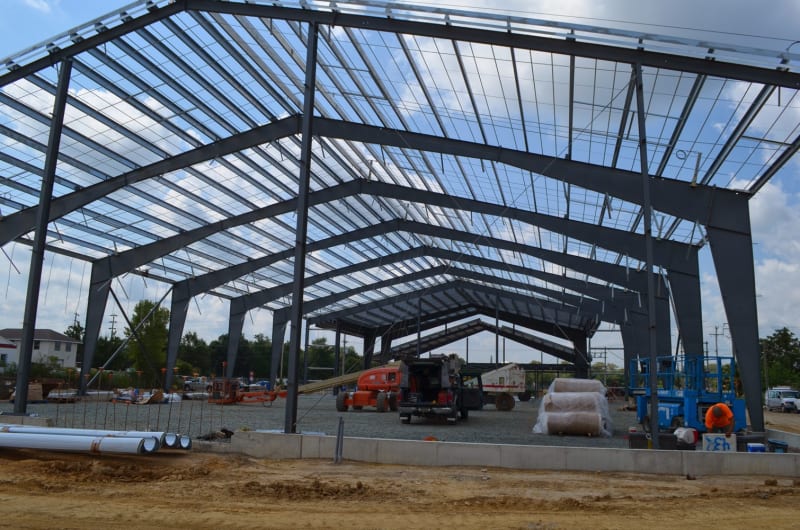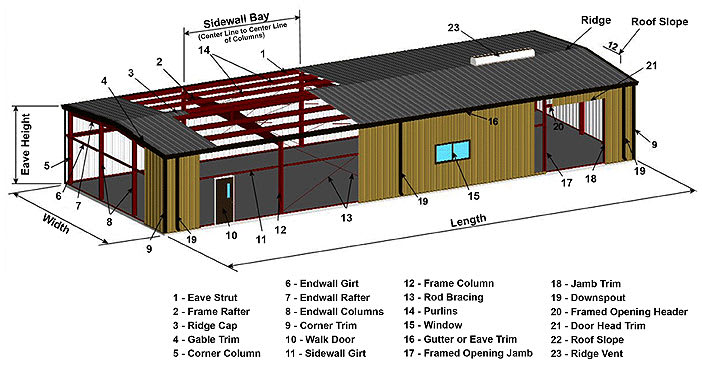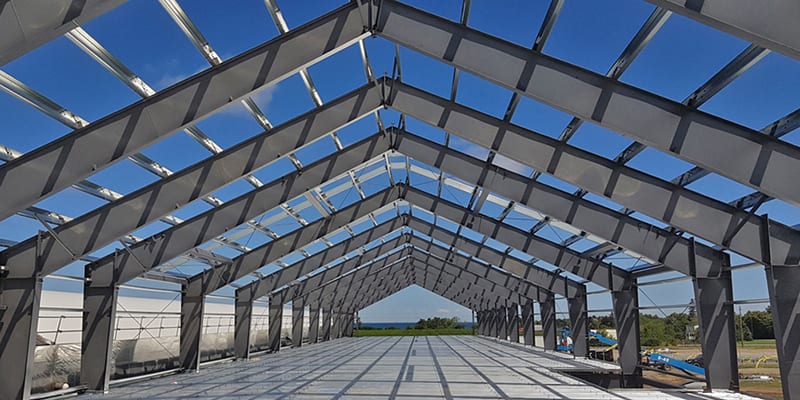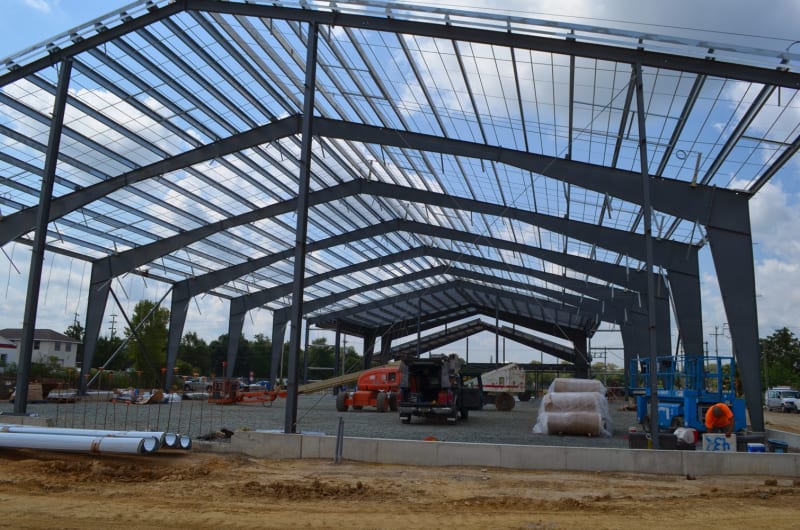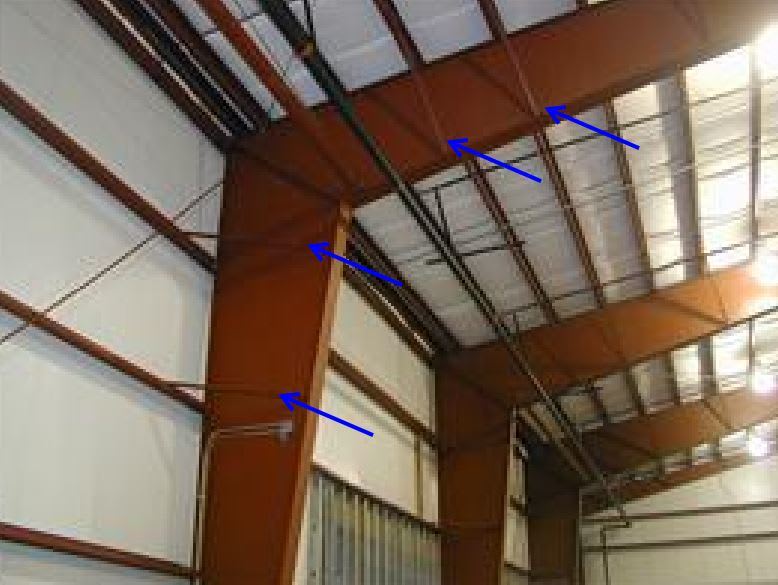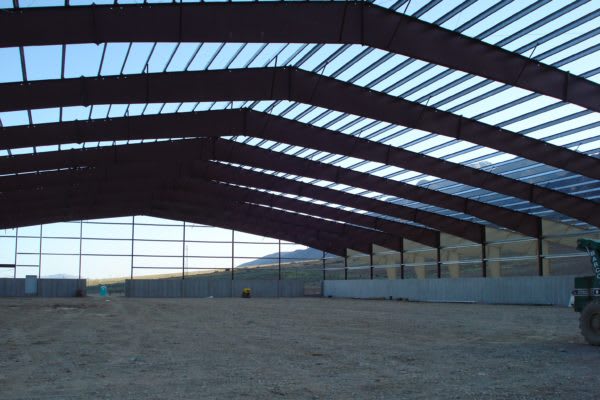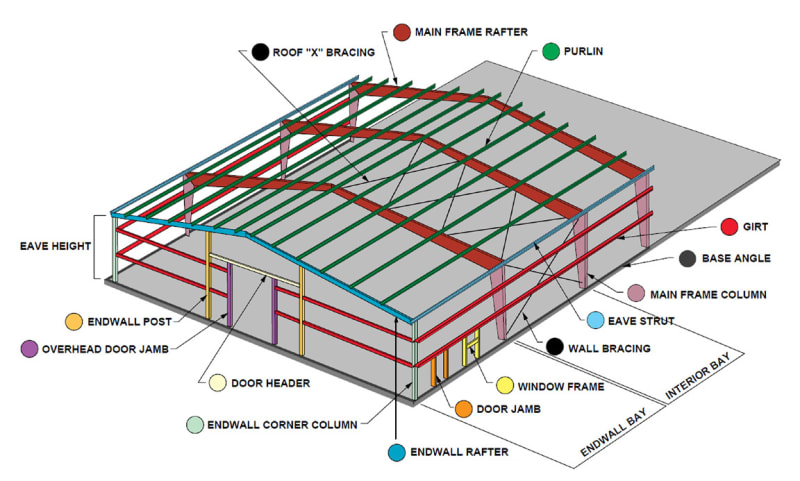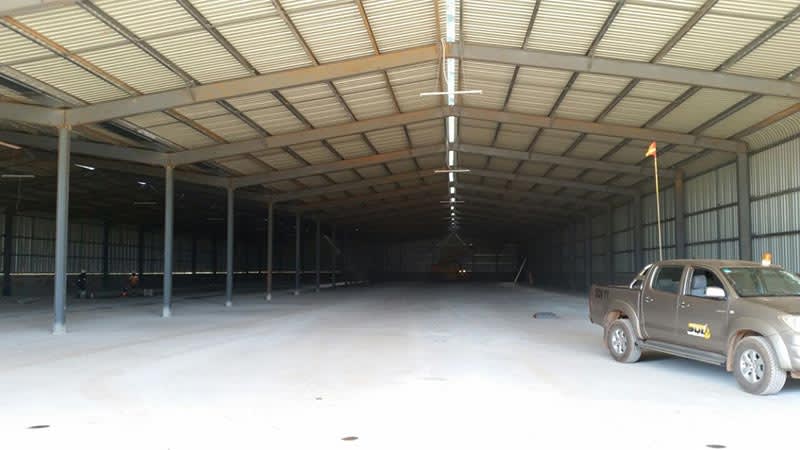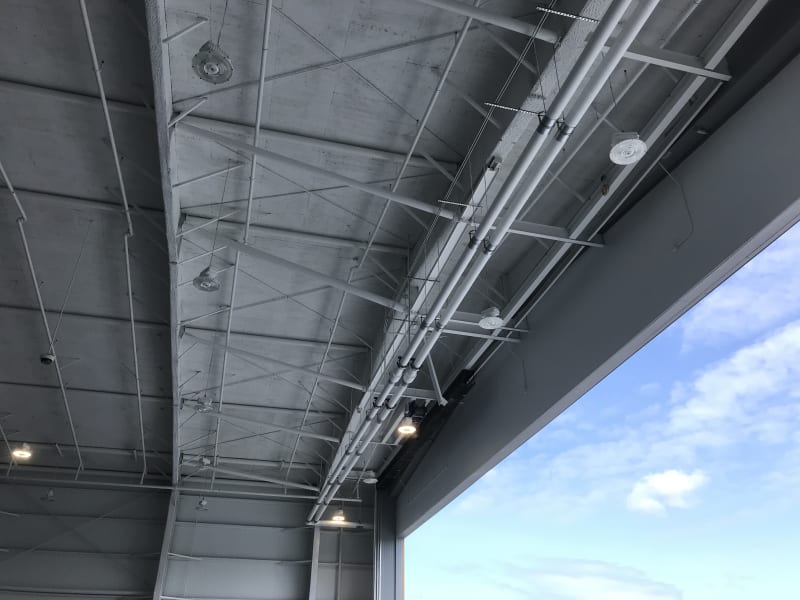I've designed a few foundations for metal buildings but I don't claim to be an expert on the load path the PEMB manufacturers use. My question is specific to the rod bracing you commonly see in the roof of these structures. They installed some rod bracing that is bent pretty bad. I got a comment from a PEMB supplier's project manager that says these are non-structural elements and are only used to square the building. I had always thought these braces created a diaphragm. Am I wrong?
I'm going to challenge the statement and want something in writing from the PEMB manufacturer but wanted to check here with the experts in case they try to pull a fast one.
I'm going to challenge the statement and want something in writing from the PEMB manufacturer but wanted to check here with the experts in case they try to pull a fast one.

